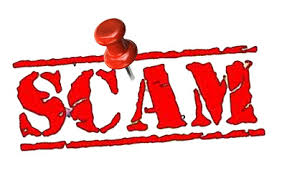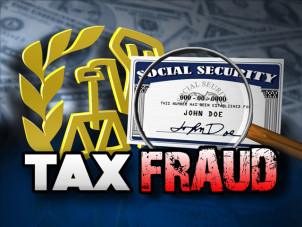It’s important to know that there are scam artists out there who will try to take advantage of you. Be on your guard from a new influx of counterfeit clothes and scam websites. The internet has been a great asset to US clothing shoppers looking for good buys on the best brands. Unfortunately, it has also been a great asset to criminals dealing in counterfeit clothes they try to pass off as the real thing. While the illegal market in fake top brand clothing predates the World Wide Web, the Internet has opened up new avenues of opportunity for those dealing in counterfeit clothes.
The United States has seen a large rise in scam websites that typically promise that popular and expensive items of clothing manufactured by the best known brands can be had at bargain prices. They often have fake web addresses that falsely give the impression that they are operating in the US, when in fact the website owners may be scammers operating out of other countries.
The quality of the clothes is often far below the standards set by the real manufacturers, with some websites operating with no actual inventory. Consumers order, their money is accepted, but they never receive anything at all.
The dealing in counterfeit clothes is not some small scale operation. The sums of money involved are huge, with some estimates putting the total take of larger scam websites at millions of dollars per year. The counterfeit clothes racket also ties into other criminal activities, such as banking fraud and identity theft. Once you give a criminal organization your credit card number, there are a wide array of illegal ways it can be used to rob you again.
Because the clothing scam websites are located overseas, it can be all but impossible to complain about poor quality, orders never received or seek relief in the United States legal system. Even reporting the scammers to the law enforcement agencies of the countries from which they operate will seldom bring any results. Sometimes action can be taken to de-register the scam sites so that others won’t get duped, but even this can be ineffective.
The market for counterfeit clothes is not confined to the United States. In Great Britain last year, hundreds of scam shopping websites were closed for selling fake designer clothing and jewelry. In Ireland, poorly made counterfeit clothing became so widespread that the European Consumer Centre made a special plea to consumers to be cautious when buying clothes online.
The center strongly advises “consumers to do comprehensive research on a trader when shopping on the Internet” a spokeswoman said. She continued to suggest that customer look for contact details, as any missing information is a red flag.
It’s also important to know what too look for with counterfeit products. Examine the product as closely as you can online, counterfeit designer goods often have logos that are fuzzy, misspelled, or otherwise off from the brand, something a high quality designer would never allow to ship. The stitching on counterfeit merchandise is often sloppy. If you can see the stitching without much effort, it is nearly guaranteed to be a fake.
Caution should always be used online, but becoming familiar with the genuine product and examining potential deals is one of the best ways to stay safe.
As counterfeit production becomes more elaborate, the proper tags do not necessarily mean a genuine product. As a result, many manufacturers of high quality clothing have taken extra steps to ensure their product stands out. Holographic logos and serial numbers are just a few methods that can ensure a legitimate purchase. Know the designer’s key marks and beware of products that lack them.
Be cautious of high fashion clothing being advertised at greatly reduced prices and only pay using a secure, refundable, method such as a credit card or a secure service such as PayPal.
Make sure you use online retailers that do provide genuine merchandise at a discount. In the end, you’re your own best advocate to prevent getting scammed. Use your common sense and know what you’re buying, and remember the old saying that “if it seems too good to be true, then it probably is.”
 Imposters. Impersonators. Fakes. Frauds. Phonies. You might call them by different names, but these scam artists have one thing in common: they pretend to be someone they aren’t and tell you a bogus story to con you into wiring them money.
Imposters. Impersonators. Fakes. Frauds. Phonies. You might call them by different names, but these scam artists have one thing in common: they pretend to be someone they aren’t and tell you a bogus story to con you into wiring them money.



 Identity thieves LOVE tax season.
Identity thieves LOVE tax season. Click
Click